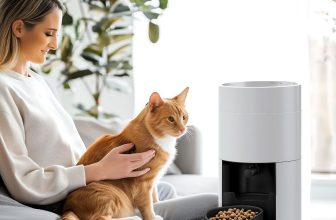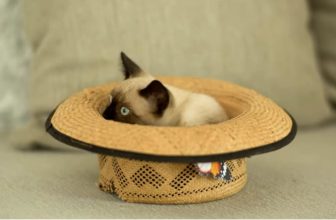What Can I Feed a Cat? Safe & Healthy Options Guide
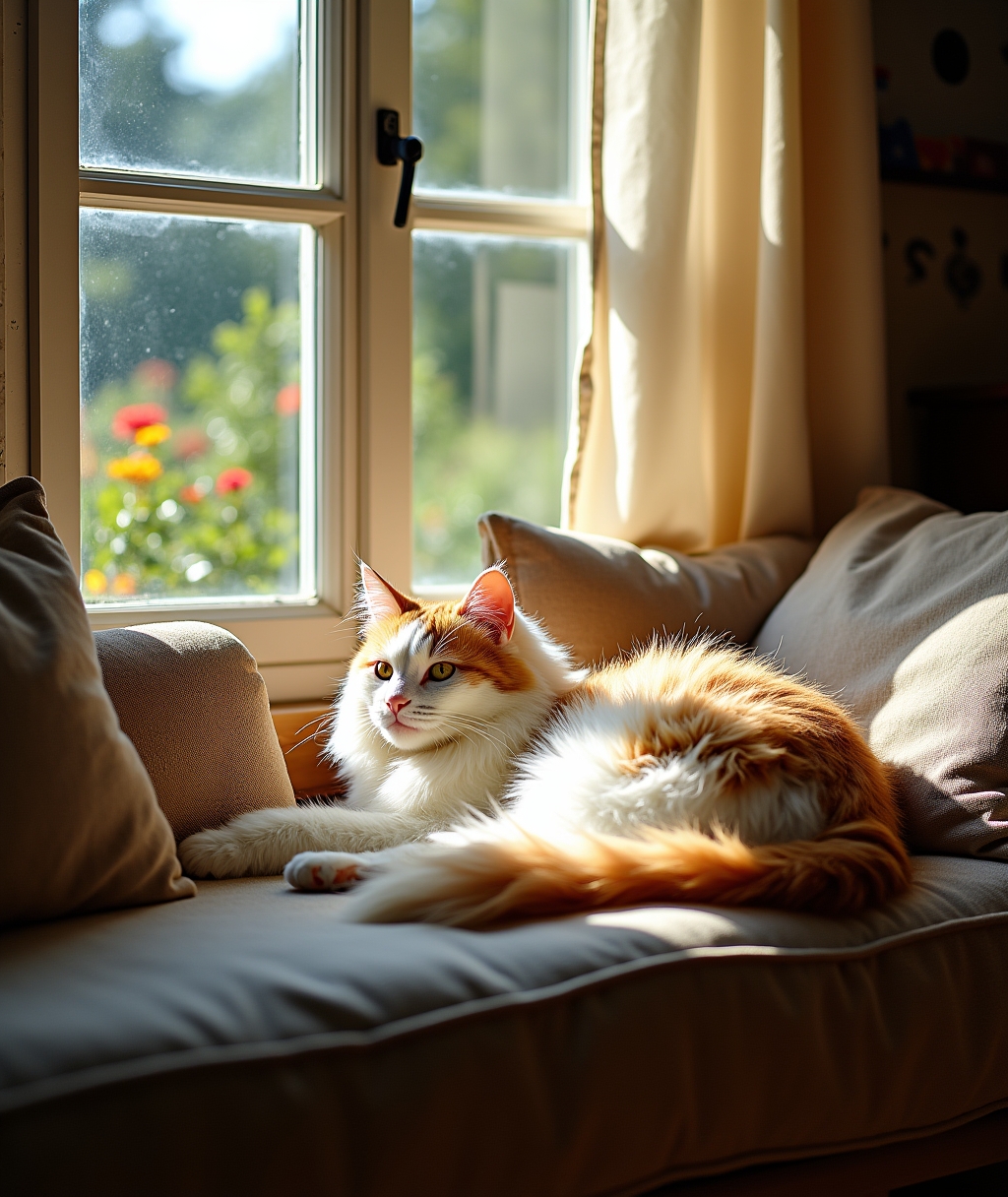
What Can I Feed a Cat? That’s a question I asked myself when I first got a cat. Between commercial foods and homemade treats, the choices can feel overwhelming. But don’t worry—feeding your cat right doesn’t have to be complicated.
Cats are obligate carnivores, which means they need meat to stay healthy. While most store-bought cat foods meet basic nutritional needs, there are also safe human foods you can share in moderation.
In this guide, I’ll walk you through what’s safe, what to avoid, and how to give your cat a diet that supports long-term health and happiness. Let’s dive into what you can—and should—feed your cat!
Essential Nutrients
Feeding a cat the right food is important for its health. Cats need essential nutrients to stay active and happy. These nutrients include proteins, fats, vitamins, and minerals. Understanding these elements can help you choose the best diet for your feline friend.
Proteins
Cats are obligate carnivores. This means they need proteins from animal sources. Proteins are crucial for muscle growth and repair. They also help with enzyme and hormone production.
Some good sources of protein for cats include:
- Chicken
- Fish
- Turkey
- Beef
Commercial cat foods usually list the protein source on the label. Always check the label to ensure the food has high-quality proteins. Cats need more protein than dogs. This is because their bodies cannot store protein well.
Providing the right amount of protein helps maintain your cat’s health. It supports their immune system and keeps their coat shiny.
Fats
Fats provide energy for cats. They also help with the absorption of some vitamins. Fats are essential for healthy skin and fur. They also make the food taste better, encouraging cats to eat.
Good sources of fats for cats include:
- Fish oil
- Chicken fat
- Beef fat
Omega-3 and Omega-6 fatty acids are important. They help reduce inflammation and support brain health. A lack of fats can lead to dry skin and a dull coat. It can also affect your cat’s energy levels.
Always ensure the food you choose has the right balance of fats. Too much fat can cause obesity. Too little can lead to health issues.
Vitamins And Minerals
Vitamins and minerals are vital for a cat’s health. They support various functions in the body. This includes vision, bone health, and the immune system.
Important vitamins for cats include:
- Vitamin A
- Vitamin D
- Vitamin E
- Vitamin K
Essential minerals include:
- Calcium
- Phosphorus
- Magnesium
- Potassium
Commercial cat foods are usually fortified with these vitamins and minerals. It is important to choose a balanced diet. Over-supplementing can be harmful. Always consult your vet before adding supplements to your cat’s diet.
Providing a well-balanced diet ensures your cat gets all the necessary nutrients. This helps keep them healthy and act
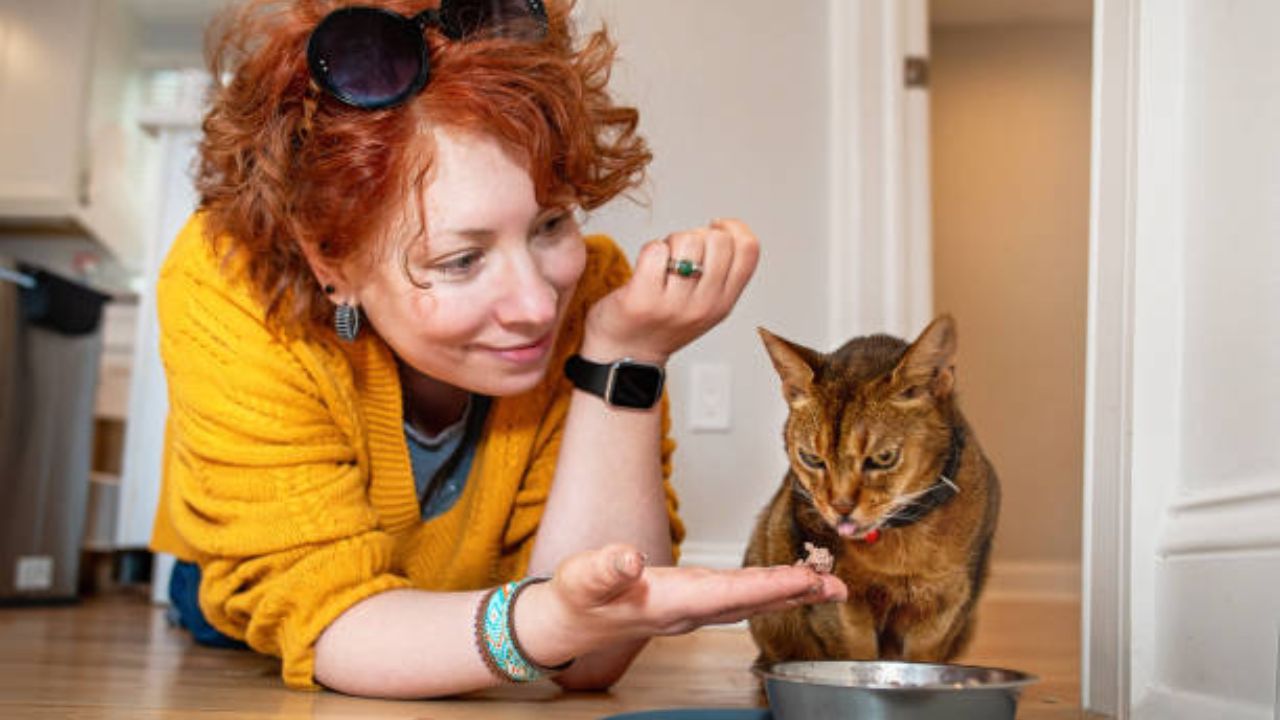
Commercial Cat Food
Cats have unique dietary needs. Providing the right food ensures their health and happiness. Choosing the right commercial cat food can be challenging. There are several options, like dry food, wet food, and raw diets. Understanding each type helps in making an informed decision for your furry friend.
Dry Food
Dry cat food is a popular choice among pet owners. It is convenient and easy to store. Dry food usually comes in the form of kibble. It helps in keeping the cat’s teeth clean by reducing plaque buildup. Most dry foods are made with a mix of meat, grains, and vegetables.
- Long shelf life
- Affordable
- Helps in dental health
However, it is important to choose a high-quality brand. Look for dry food with meat as the first ingredient. Avoid products with too many fillers or artificial additives. Ensuring your cat drinks enough water is crucial. Dry food alone might not provide enough moisture.
Wet Food
Wet food is another excellent option for cats. It comes in cans or pouches. Wet food contains a high amount of moisture, which is beneficial for hydration. Cats that do not drink much water can benefit from wet food. It is also known to be more palatable to picky eaters.
- Higher moisture content
- Rich in protein
- More appealing to cats
Feeding your cat wet food can help prevent urinary tract issues. It is also easier to digest compared to dry food. However, wet food can be more expensive. It also has a shorter shelf life once opened. Make sure to store it properly in the refrigerator.
Raw Diets
Some cat owners prefer to feed their pets a raw diet. This includes raw meat, bones, and organs. Advocates believe it mimics a cat’s natural diet in the wild. Raw diets can offer many benefits, including better skin and coat health.
- Natural ingredients
- Improved coat condition
- Better digestion
However, raw diets require careful preparation. It is essential to ensure the meat is fresh and safe. There is a risk of bacterial contamination. Consulting with a vet before switching to a raw diet is advisable. Proper handling and hygiene are crucial to avoid health issues.

Homemade Cat Meals
Feeding a cat involves more than just providing food. Cats need a balanced diet to stay healthy. Making homemade meals for your cat can be a great option. It can help you control what your cat eats. Let’s explore some recipes and how to balance nutrients for your feline friend.
Cooked Recipes
Cooking for your cat can be simple. Chicken and rice are a popular option. Boil chicken until fully cooked. Add some plain rice. Mix them. This meal is easy to digest.
Another good option is tuna and eggs. Use plain, canned tuna. Scramble an egg. Mix the tuna and egg. Make sure the egg is fully cooked.
Here are some other ideas:
- Salmon and sweet potato: Cook the salmon thoroughly. Mash some cooked sweet potato. Mix them.
- Beef and carrots: Cook ground beef. Add some cooked, chopped carrots. Mix them well.
Always remember to avoid spices, onions, and garlic. These can be harmful to cats.
Balancing Nutrients
Ensuring your cat gets all the nutrients is vital. Cats need protein, fats, and vitamins. Taurine is an important nutrient. It is found in meat, especially in the heart. Cats also need vitamin A and arachidonic acid.
Here is a simple table to understand the nutrient needs:
| Nutrient | Source |
|---|---|
| Protein | Chicken, Fish, Beef |
| Fats | Fish Oil, Chicken Fat |
| Taurine | Meat, Fish |
| Vitamin A | Liver, Fish |
| Arachidonic Acid | Animal Fat |
Supplementing may be necessary. Commercial cat food often adds these nutrients. When making homemade meals, consider adding supplements. Consult with a vet to make sure your cat gets everything it needs
Toxic Foods:
Cats are curious creatures. They love to explore, including tasting different foods. But not all foods are safe for them. Knowing what foods are toxic is important. This helps keep your feline friend healthy and happy.
Common Hazards
Some foods are dangerous for cats. They can cause serious health issues. Here are a few common hazards:
- Chocolate: Contains theobromine and caffeine. Both are toxic to cats.
- Onions and Garlic: Can damage red blood cells. This leads to anemia.
- Grapes and Raisins: Can cause kidney failure. Even small amounts can be harmful.
- Alcohol: Even a small sip can cause serious problems. It affects the liver and brain.
- Caffeine: Found in coffee, tea, and soda. It can lead to heart problems.
Another common hazard is raw meat. It can contain bacteria like Salmonella. This can make your cat very sick. Also, avoid feeding bones. They can splinter and cause internal injuries.
Some human medications are dangerous, too. Painkillers, antidepressants, and cold medicines are examples. Keep these out of reach.
Symptoms Of Poisoning
Recognizing symptoms of poisoning is crucial. It can save your cat’s life. Here are some signs to watch for:
- Vomiting and Diarrhea are common signs of poisoning.
- Loss of Appetite: Your cat may refuse to eat.
- Weakness and Lethargy: Your cat might seem unusually tired.
- Breathing Difficulties: Rapid or troubled breathing is a red flag.
- Seizures: This is a serious symptom. Immediate veterinary care is needed.
Other symptoms include drooling and tremors. Your cat may also show signs of disorientation. If you notice any of these symptoms, contact your vet immediately.
Keeping a close eye on your cat’s behavior is key. Quick action can prevent serious health issues. Always be aware of what your cat is eating.
Feeding Frequency
Feeding your cat the right food is very important. It keeps them healthy and happy. But what should you feed them? And how often? Different ages of cats need different foods and feeding schedules. Here, we will look at what to feed kittens, adult cats, and senior cats. We will also see how often they should eat.
Kittens
Kittens grow fast. They need lots of nutrients to stay healthy. Kittens need to eat more often than adult cats. They should have small meals four to five times a day.
Here is a simple feeding table for kittens:
| Age | Feeding Frequency |
|---|---|
| 0-3 months | 4-5 times a day |
| 3-6 months | 3-4 times a day |
| 6-12 months | 2-3 times a day |
High-quality kitten food is best. It has the right balance of protein, fat, and vitamins. Wet and dry food can be mixed. Always provide fresh water. Avoid cow’s milk, as it can upset their stomachs.
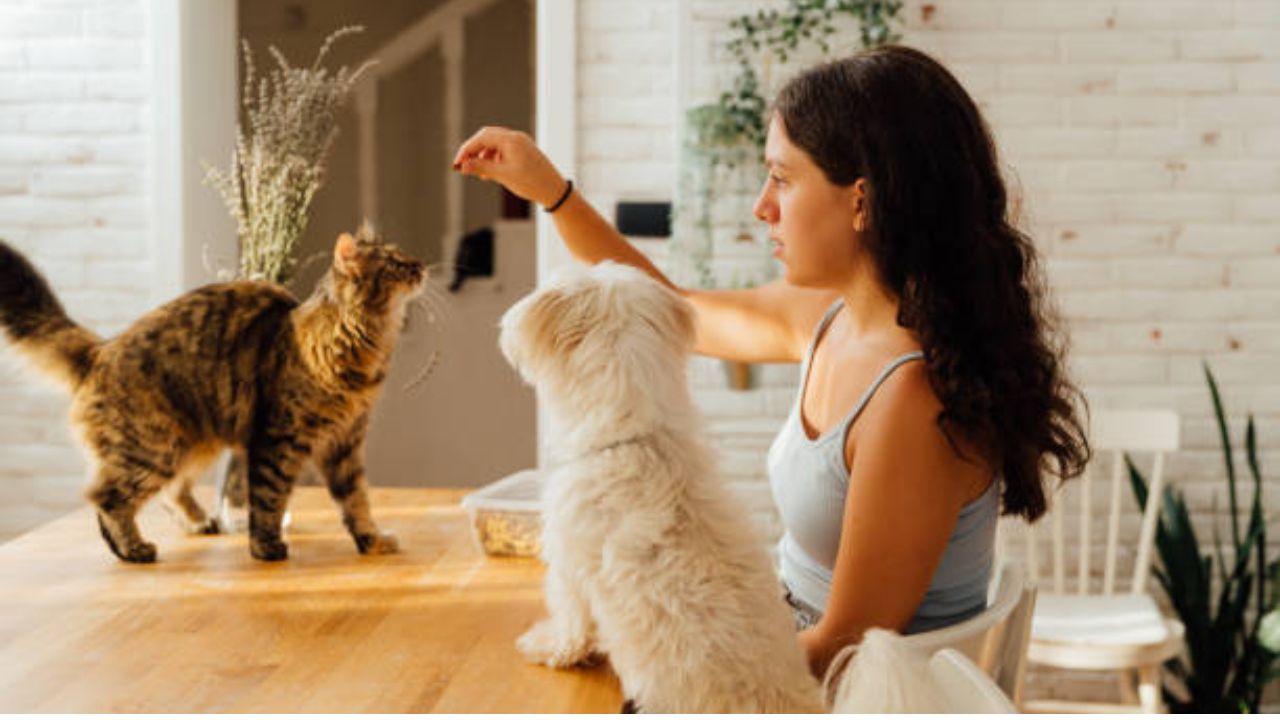
Adult cat:
Adult cats have different needs. They should eat two meals a day. Portion control is important to avoid obesity. Adult cat food is specially made for their needs. It has balanced nutrients for their size and activity level.
Here are some tips for feeding adult cats:
- Feed them twice a day, morning and evening
- Use a measuring cup to control portions
- Provide both wet and dry food
- Ensure they have fresh water at all times
High-protein foods are good for active cats. For less active cats, a lower-calorie food may be better. Avoid giving them too many treats. It can lead to weight gain.
Senior Cats
Senior cats have special needs, too. They may have a slower metabolism and less activity. Feeding them smaller, more frequent meals can help. They might need special senior cat food. This food is easier to digest and has the right nutrients for older cats.
Here is a simple feeding table for senior cats:
| Age | Feeding Frequency |
|---|---|
| 7-10 years | 2-3 times a day |
| 10+ years | 3-4 times a day |
Moist foods can be good for older cats. It helps keep them hydrated. Senior cats might need more fiber to help with digestion. Always consult a vet if you have concerns about their diet.
Portion Control
Feeding a cat the right amount of food is crucial for its health. Portion control helps keep your cat at a healthy weight. It prevents overfeeding and underfeeding. Let’s explore how to measure your cat’s food and adjust portions based on its weight.
Measuring Food
Proper measurement of your cat’s food is essential. Accurate portions ensure your cat gets the right nutrients. Here are some tips to measure food:
- Use a measuring cup. Avoid guessing the amount.
- Refer to the feeding guidelines on the cat food package. These guidelines provide a good starting point.
- Consider your cat’s age and activity level. Kittens need more food than adult cats.
- Weigh your cat’s dry food if possible. A kitchen scale can give precise measurements.
Here’s a simple table to help you understand the portions:
| Cat’s Weight (lbs) | Daily Food Amount (cups) |
|---|---|
| 5 | 1/4 to 1/3 |
| 10 | 1/2 to 3/4 |
| 15 | 3/4 to 1 |
Always monitor your cat’s response to the portions. Adjust as needed based on its needs.
Adjusting For Weight
Adjusting your cat’s food based on its weight is important. Overweight cats need fewer calories. Underweight cats need more nutrients. Here are some steps to adjust portions:
- Weigh your cat regularly. Keep track of any weight changes.
- Consult your vet for a proper diet plan. A vet can guide you on the right portions.
- Gradually reduce food for overweight cats. Cut back by small amounts.
- Increase food for underweight cats. Add extra, but not too much, at once.
Here’s a quick guide to help with adjustments:
| Cat’s Weight Status | Adjustment |
|---|---|
| Overweight | Reduce by 1/4 cup |
| Underweight | Increase by 1/4 cup |
Remember, portion control helps maintain your cat’s health. Regular adjustments ensure they get the right nutrients.

Special Dietary Needs
Feeding a cat can be simple, but some cats have special dietary needs. Whether it is because of allergies or medical conditions, knowing what to feed your cat is important. This guide will help you understand the best food options for your furry friend.
Allergies
Some cats have food allergies. These allergies can make your cat very uncomfortable. Symptoms include itchy skin, upset stomach, and frequent ear infections. Identifying these symptoms early is crucial.
Common allergens in cat food are:
- Chicken
- Fish
- Dairy
- Grains
If your cat has an allergy, try a limited ingredient diet. This diet contains fewer ingredients and is less likely to cause reactions. Check with your vet before changing your cat’s diet.
Medical Conditions
Cats with medical conditions need special diets. Diabetes, kidney disease, and obesity are common issues. Each condition requires different food to manage symptoms.
For diabetic cats, choose low-carb and high-protein foods. This helps control blood sugar levels. Kidney disease requires food with lower protein and phosphorus to reduce strain on the kidneys. Obese cats benefit from low-calorie diets and high-fiber foods. This helps in weight management.
| Condition | Recommended Diet |
|---|---|
| Diabetes | Low-carb, high-protein |
| Kidney Disease | Low-protein, low-phosphorus |
| Obesity | Low-calorie, high-fiber |
Always consult your vet for the best diet for your cat. They can provide guidance on managing these conditions through proper nutrition.
Treats And Snacks
Cats are beloved members of many families. Knowing what to feed them is essential for their health. Treats and snacks can be a great way to bond with your cat. They can also help with training. But it’s important to choose the right options.
Healthy Options
Cats need balanced nutrition. Healthy treats can be a part of their diet. Some good choices include:
- Cooked chicken: It’s high in protein and low in fat.
- Cooked fish: Rich in omega-3 fatty acids.
- Small amounts of cheese: Full of calcium and protein.
- Commercial cat treats: Look for ones with natural ingredients.
It’s vital to avoid feeding cats certain foods. Chocolate, onions, and garlic are toxic. Also, steer clear of bones and raw meat. These can cause health problems. Always check with your vet before introducing new foods.
Cats also enjoy variety. Small pieces of fruit like apples or blueberries, can be good. But always remove seeds and cores. They can be harmful.
| Food | Benefits |
|---|---|
| Cooked chicken | High in protein |
| Cooked fish | Rich in omega-3 |
| Small amounts of cheese | Calcium and protein |
| Commercial cat treats | Natural ingredients |
Avoiding Overfeeding
Overfeeding can lead to obesity in cats. It’s crucial to control portions. Treats should be less than 10% of their daily intake. This helps maintain a balanced diet. Too many treats can cause weight gain and other issues.
Monitoring your cat’s weight is important. Regular vet check-ups can help. Keep an eye on their activity level too. Less active cats need fewer calories.
Another tip is to use treats for training. This can limit the number of treats given. Make sure to adjust their regular meals accordingly. If you give more treats, reduce their main food.
- Measure treats: Use a measuring cup.
- Limit frequency: Treats only once or twice a day.
- Choose low-calorie options: Helps control weight.
- Interactive feeding: Use puzzle feeders to make them work for treats.
Establishing a routine is also important. Feed treats at the same time each day. This helps prevent begging and keeps your cat healthy.
Frequently Asked Questions: What Can I Feed a Cat?
What Can I Feed My Cat If I Don’t Have Cat Food?
You can feed your cat cooked chicken, turkey, or fish. Avoid bones and seasoning. Plain, scrambled eggs or small amounts of cheese are also safe.
What Are You Allowed To Feed Cats?
Feed cats high-quality commercial cat food. Include wet and dry food for variety. Occasionally, offer cooked meat or fish. Avoid bones, dairy, onions, garlic, chocolate, and caffeine. Ensure fresh water is always available.
What Is A Cat’s Favorite Food?
Cats often love eating meat like chicken, fish, and beef. Wet food with high protein content is usually their favorite.
What Is A Cat’s Favorite Food?
Feed a starving cat wet canned food or cooked plain chicken. Avoid giving milk, raw meat, or bones. Ensure fresh water is available.
What Human Foods Can Cats Eat?
Cats can eat cooked meat, fish, eggs, and some vegetables. Avoid onions, garlic, and chocolate.
Conclusion
Feeding your cat well ensures a happy, healthy pet. Choose high-quality cat food. Include protein-rich options like chicken or fish. Avoid harmful foods like chocolate or onions. Fresh water is essential daily. Treats can be occasional but not frequent. Watch your cat’s weight and adjust portions.
Consult your vet for personalized advice. Proper feeding keeps your cat energetic and content.




